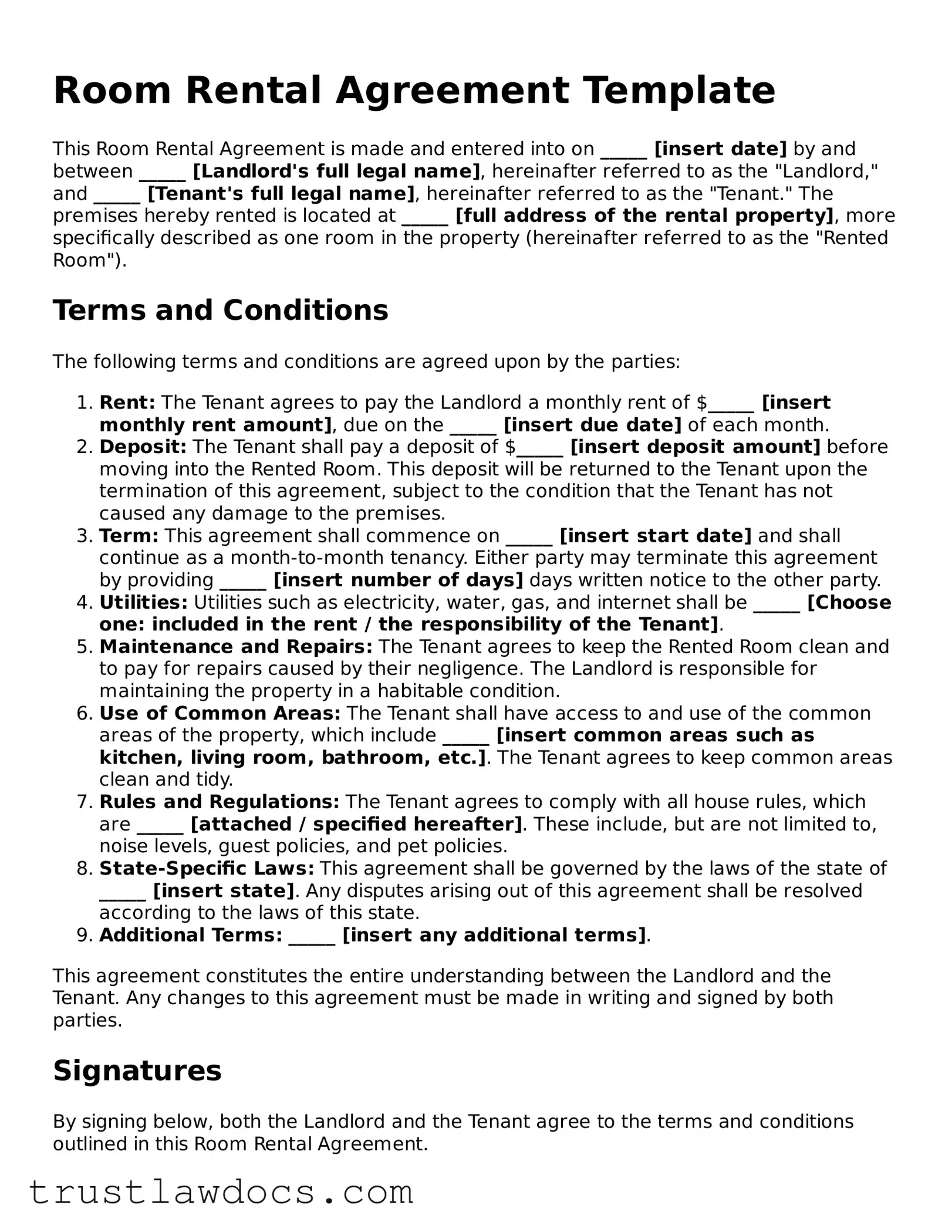What is a Room Rental Agreement?
A Room Rental Agreement is a legally binding document between a landlord and a tenant that outlines the terms and conditions of renting a room within a larger property. It includes details such as rent amount, payment schedule, rules regarding use of common areas, and responsibilities of both the landlord and tenant.
Who needs a Room Rental Agreement?
Anyone who intends to rent out a room within their property should use a Room Rental Agreement. This includes homeowners who are looking to earn extra income by renting out spare rooms and tenants who wish to sublet a room with the property owner's consent.
What are the key components of a Room Rental Agreement?
The agreement should include the names of all parties involved, rental term, rent amount, security deposit details, rules regarding use of common spaces, policies on pets, guest policies, and grounds for termination. Additionally, it should list the responsibilities of each party, including maintenance and utilities.
How does a Room Rental Agreement differ from a Lease Agreement?
While both agreements serve as bindings for renting property, a Room Rental Agreement specifically pertains to the rental of a single room within a property, as opposed to an entire house or apartment. It usually covers a shorter term, and may offer more flexibility in terms of rules and use of shared spaces.
Can a Room Rental Agreement be terminated early, and if so, how?
Yes, a Room Rental Agreement can be terminated early if both parties agree to the terms of termination, which should be included within the contract. It should detail any notice period required, responsibilities for remaining rent, and conditions for the return of the security deposit.
Does the landlord need to provide notice before entering the rented room?
Yes, in most cases, the landlord must provide reasonable notice before entering the rented room, except in emergencies. The exact amount of notice time should be clearly stated in the agreement to ensure privacy rights are respected.
Is a security deposit always required, and what is its purpose?
While not always required, a security deposit is commonly requested as part of a Room Rental Agreement. Its purpose is to cover any damages that may occur during the tenant's occupancy, beyond normal wear and tear, or any unpaid rent if the tenant leaves early without fulfilling the rental period agreed upon.
How can disputes between a landlord and tenant over the Room Rental Agreement be resolved?
Disputes should first attempt to be resolved through direct communication and negotiation. If an agreement cannot be reached, mediation might be a next step before considering legal action. The agreement might specify preferred methods of dispute resolution.
What happens if a tenant violates the terms of the Room Rental Agreement?
If a tenant violates the terms of the agreement, the landlord has the right to issue a notice to correct the violation within a specified period. Continual violation may lead to eviction proceedings according to state and local laws pertaining to rental properties.
